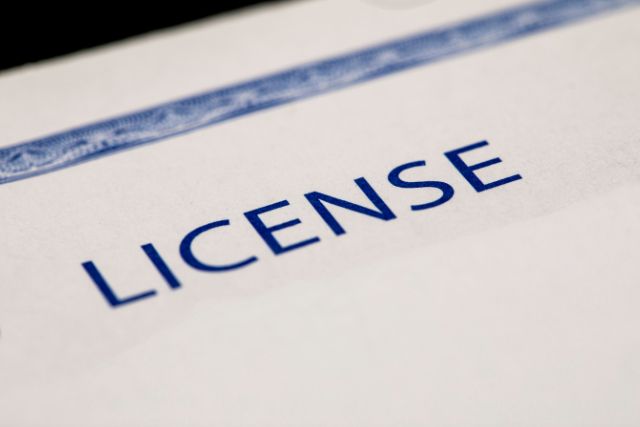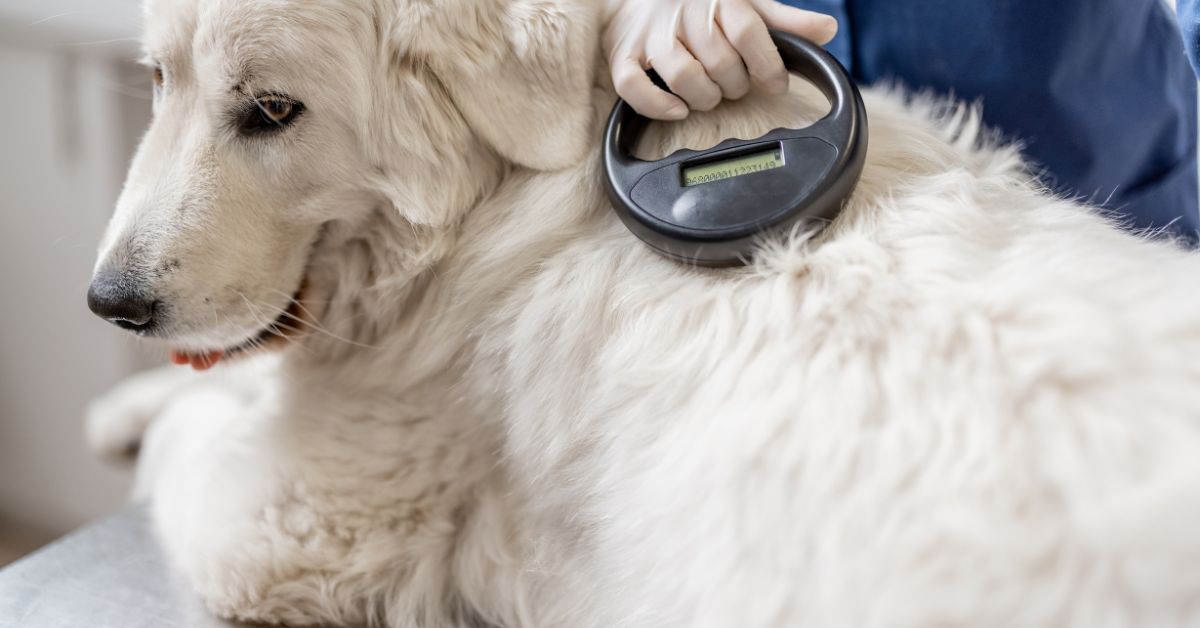Every pet owner’s nightmare is the thought of their beloved dog going missing.
This is where microchipping can be a beacon of hope, ensuring that lost pets have a higher chance of being reunited with their families.
This guide explores the crucial role of microchips for dogs and outlines the necessary steps to protect your furry friend.
Understanding Microchipping
Microchipping is a standard procedure that embeds a tiny chip beneath your dog’s skin. This chip carries a unique number that is registered in a national database linked to your contact information.
What Is a Microchip?
A microchip is a small, electronic chip enclosed in a glass cylinder about the size of a grain of rice.
The microchip itself does not have a battery—it is activated by a scanner that passes over the area, and the radio waves put out by the scanner activate the chip.
How Is a Microchip Implanted?
The process of implanting a microchip is quick and simple. It is injected under the skin using a needle and does not require anesthesia. It’s akin to a routine shot and most dogs handle the procedure well.


The Technology Behind Microchips
Microchips use radio-frequency identification (RFID) technology. Each chip contains a registration number and the phone number of the registry for the particular brand of chip.
A microchip scanner reads the radio frequency of the chip and displays this information.
Legal Implications in Australia
In Australia, the law requires that all dogs must be microchipped. This law aims to increase the likelihood of lost dogs being returned to their owners swiftly, reducing the burden on animal shelters.
National and State Regulations
Each state has specific regulations regarding the microchipping of pets. For instance, in New South Wales, puppies must be microchipped by 12 weeks of age.
Consequences of Not Microchipping Your Dog
Failure to microchip your dog can lead to fines and other legal consequences. More importantly, if your dog goes missing, the chances of recovery without a microchip are significantly decreased.


Benefits of Microchipping
Microchipping comes with numerous benefits that can ease the mind of any pet owner.
Increased Chances of Recovery
If your dog ever gets lost, a microchip increases the likelihood that it will be returned to you.
Most veterinary clinics and animal shelters have scanners that can read the information on the chip and contact you.
Prevention of Theft and Proof of Ownership
A microchip also serves as an anti-theft device. In the unfortunate event that your dog is stolen, microchips can serve as proof of ownership.
Management of Medical Information
Microchips can be a critical tool in managing your pet’s health with their ability to link to your pet’s medical records.
Keeping Microchip Information Updated
Keeping your dog’s microchip information up-to-date is vital. If you move or change your phone number, updating the microchip details is just as crucial as notifying your friends or relatives.
Why It’s Crucial to Update Your Information
If the information linked to your dog’s microchip is outdated, it will be much harder to reunite with your pet in case they get lost or stolen.


Steps to Update Microchip Details
Updating your information can usually be done online through the registry’s website where your microchip is registered.
Addressing Common Concerns and Myths
Despite its benefits, some pet owners are hesitant about microchipping due to misconceptions.
Health Risks Associated with Microchipping
The procedure is low-risk, involving only minor, temporary discomfort similar to any standard vaccination.
Microchips and Privacy Concerns
Microchips do not contain GPS technology and cannot track your movements. They only provide your contact information when scanned.
Debunking Myths About Microchipping
Contrary to some myths, microchips do not cause cancer or any other long-term health problems in dogs.
How to Microchip Your Dog
Microchipping your dog is a straightforward process and can be completed during a routine vet visit.


Finding a Vet and the Microchipping Procedure
To have your dog microchipped, you should visit a licensed veterinarian. The vet will use a syringe to insert the microchip under the skin, usually between the shoulder blades.
Costs Involved in Microchipping
The cost of microchipping is relatively low compared to the peace of mind it offers. Prices can vary but typically range from $20 to $50 in Australia.
Stories of Success: Reunited Pets
Countless Australian pet owners have heartwarming stories of being reunited with their pets thanks to microchips.
These stories not only underscore the effectiveness of microchipping but also highlight its emotional value.
Real-Life Story from Australia
One such story is of a lost dog from Sydney that was found over 300 kilometres away in Canberra. Thanks to its microchip, the dog was safely returned to its owner within days.
Statistics on Lost Pets and Recovery Rates
Studies show that microchipped dogs are more than twice as likely to be returned to their owners as non-microchipped dogs.
For example, the return rate for microchipped dogs can be as high as 52.2%, compared to just 21.9% for dogs without microchips.
Resources and Further Reading
To learn more about microchipping and stay informed about the latest in pet care, here are some resources you can explore:


Websites and Organisations for Pet Owners
Visit websites such as the Australian Animal Protection Society or local animal shelters to find more information about microchipping and other ways to keep your pets safe.
Upcoming Microchipping Events
Many communities offer free or discounted microchipping events. Check with your local vet or animal shelter to find out when the next event is scheduled.
Summary
By understanding the importance of microchipping your dog, you can take an essential step towards ensuring their safety and your peace of mind.
Remember, a microchip is more than just a tool; it’s a bridge that can bring your lost pet back home. This reduces stress for both you and your furry friend.











